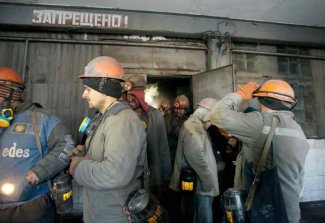Blackouts possible in Ukraine

On 15th February the Ukrainian government declared a state of emergency in the energy sector. This means in practice that it will be easier to limit electricity supplies to end users. The main reason behind the decision is the shortage of anthracite which has occurred in the last few weeks due to the blockade of railways between the part of Donbas which is not controlled by Kyiv and the rest of the country. Former soldiers of the volunteer Donbas Battalion and members of parliament of the opposition party Self-help, including Semen Semenchenko, the former commander of the Donbas Battalion, are among those blocking the railways. The blockade has been organised in protest against trading with the separatist part of Donbas and, above all, the growing scale of smuggling, also coal. Half of Ukraine’s coal-fired power generation is dependent on anthracite and all anthracite mines are located in the areas which remain beyond Kyiv’s control. On 15th February Prime Minister Volodymyr Hroisman has urged the protesters to call off the blockade and called the obstruction of coal supplies a crime.
Commentary
- The blockade of railways by the Staff of the Blockade of Trade with the Occupiers was launched towards the end of January at the railway section between Luhansk and Popasna and was then extended to two more railway lines. Those blocking the railways are demanding a complete halt to trade with the self-proclaimed ‘republics’ in Donbas and for the ‘separatists’ to release Ukrainian prisoners of war. These demands are popular with Ukrainian society and it is probably for this reason that Kyiv has not attempted to lift the blockade. Although coal supplies from the separatist part of Donbas are legal, some of them are transported illegally, bypassing checks and registration, which leads to corruption.
- Ukraine uses 24 million tons of coal a year to produce electricity and heat, including 9 million tons of anthracite. On 13th February there were 842,000 tons of anthracite stocked in electric and thermal power plants. The declaration of a state of emergency in the energy sector, albeit not unprecedented (last time one was declared was in December 2015), increases the likelihood of rolling blackouts (industrial facilities and large cities such as Kyiv, Chernihiv and Kharkiv are at most risk). The government’s decision has made it possible to reduce the average daily consumption of anthracite from 30,000 tons to 20,000 tons and due to this measure the anthracite supplies will last for 40 days.
- The shortage of anthracite is not only due to the blockade. Since Ukraine lost control of a part of Donbas in 2014 and introduced rolling blackouts in November-December that year, Kyiv has not taken any measures in order to decrease its dependence on coal supplies from these regions by signing contracts for anthracite supplies from South Africa, Australia or the US or by transforming anthracite coal-fired power stations into different types of coal-fired power stations. Within a month Ukraine will be left with only one alternative to supplying coal from Donbas, that being buying anthracite coal from Russia or resuming imports of energy from Russia (the second option was ruled out by the energy minister Ihor Nasalyk). If this does not occur and the blockade is not removed, rolling blackouts may be expected.




